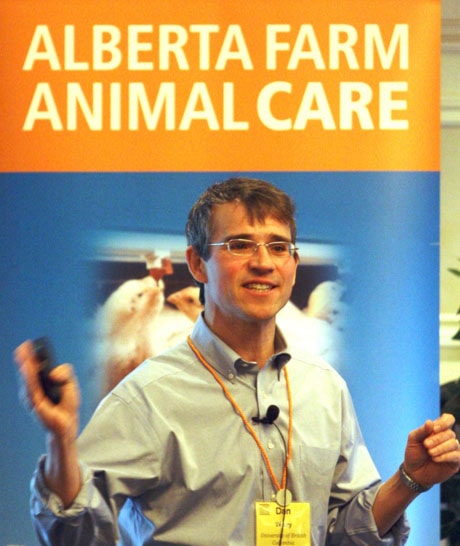When it comes to livestock care, the objectives of producers and animal welfare scientists aren’t necessarily in conflict.
In fact, says a member of the University of British Columbia’s faculty of agricultural sciences, the two groups have worked and continue to work together.
Dan Weary spoke Friday at a livestock care conference in Red Deer that was organized by Alberta Farm Animal Care.
“This partnership between animal agriculture and animal welfare science has been a productive model,” he said, describing positive outcomes in areas like comfortable housing, and control of pain and hunger.
In the case of dairy cows, said Weary, producers spend a great deal of money on facilities they believe are serving the needs of their livestock. But science can find areas for improvement.
He cited research that showed cows spend more time resting when the quality of their bedding is high. This may require more effort on the part of the producer, but it can also improve the livestock’s level of comfort and consequently their health, reduce vet costs, increase survivability and perhaps even boost production.
“The amount of improvement you can achieve through some very easy-to-apply changes in management can be vast,” said Weary.
Another example he gave was the effect of the placement of neck rails within dairy cows’ stalls.
Neck rails force the animals to back up when they rise from a lying position, which helps prevent them from defecating in their stalls. But a study has linked more restrictive neck rails with a higher incidence of lameness, because the cows are then more likely to stand with their hind feet in the wet concrete alley.
Moving the neck rail forward — a simple measure — improves cow comfort and health, said Weary.
He stressed that public opinion is becoming an important consideration when it comes to livestock care — as evidenced by last November’s passage of Proposition 2 during California’s general election. The result of that initiative is legislation that will prohibit the confinement of certain farm animals in a way that restricts their movement.
“The world is changing around us,” said Weary, suggesting that the public wants farm animals to enjoy freedom of movement and be able to engage in natural behaviours.
Simply managing livestock’s pain and suffering, and ensuring they remain in good health, may not be sufficient in the future, he said.
Weary thinks producers and scientists can work together to develop natural environments for livestock that still allow for quality and quantity of production to remain high.
“These types of concerns must be taken seriously as we move towards the creation of the types of housing and management systems for our farm animals for the next century.”
hrichards@www.reddeeradvocate.com
